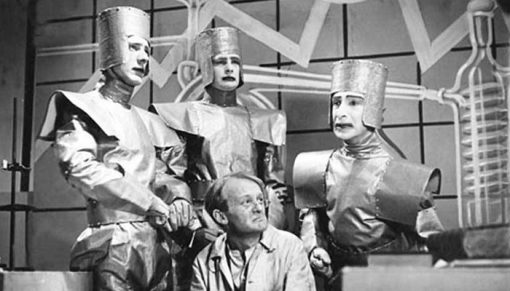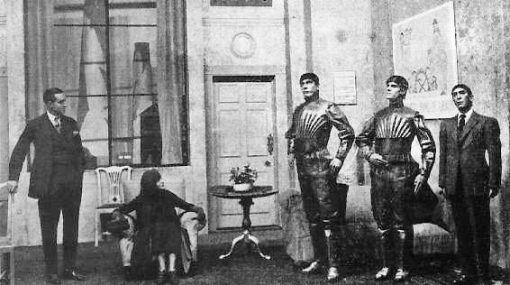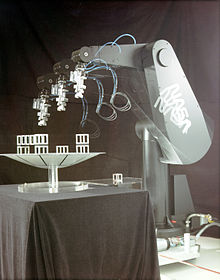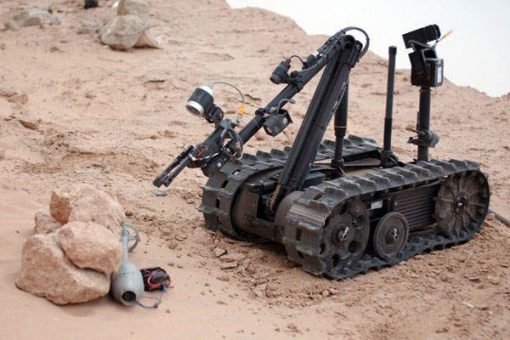1. About the word “Robot” :
:
Before 1920 the Robot word didn’t exist, until a science fiction play called R.U.R. stands for Rossumovi Univerzální Roboti (Rossum’s Universal Robot) by the Czech writer called Karel Čapek.
It had its world premiere on 2 January
1921 in Hradec Králové and introduced the word “robot” to the English language and to science fiction as a whole.
R.U.R. quickly became influential after its publication. By 1923, it had been translated into thirty languages.
The play begins in a factory that makes artificial people, called roboti (robots), from synthetic organic matter. They are living creatures of artificial flesh and blood rather than machinery, so they more closely follow the modern concept of androids.

They may be mistaken for humans and can think for themselves. They seem happy to work for humans at first, but a robot rebellion leads to the extinction of the human race. Čapek later took a different approach to the same theme in War with the Newts, in which non-humans become a servant class in human society.
R.U.R. was successful in its time in Europe and North America.
2. Definitions for Robots:
- In 1979 The Robotics Industry Association (RIA) in the United States, defined a robot as “a-reprogrammable multifunctional machine designed to manipulate material, parts, tools, or specialized devices through a variable programmed motion for the performance of a variety of tasks“.
The keyword in this definition is “manipulator”. Since a manipulator is an arm, this definition implies that all robots must have an arm and consider that the robot arm is the principal part of the robot.
- In 1985 The British Robot Association (BRA) uses a similar definition. ” An industrial robot is a reprogrammable device designed to both manipulate and transport parts, tools or specialized manufacturing implements through variable programmed motions for the performance of specific manufacturing tasks “.
The British definition does add a transport capability, but it requires that the robot perform manufacturing tasks. Technically, robots performing nonmanufacturing industrial or commercial tasks would not qualify under this definition.

- In 1986 Dr. Bejczy’s definition, ” There are three parts to the technical definition of robots. First, robots are general-purpose mechanical machines. Second, they are programmable to perform a variety of work within their mechanical capabilities. Third, they operate automatically“.
This definition can be considered as one of the most accepted definitions of robots.
3. First Robot Ever:

- The first industrial robot: UNIMATE in 1954 The first programmable robot is designed by George Devol, who coins the term Universal Automation.
- Then in 1978, The PUMA (Programmable Universal Machine for Assembly) robot is developed by Unimation with General Motors design support.
4. Types of Robots:
4.1. According to Applications:
- Industrial robots.

- Domestic or household robots.
- Medical Robots.
- Service Robots.
- Military Robots.
- Entertainment Robots.
- Space Robots.
- Hobby and competition Robots.
4.2. According to Locomotion and Kinematics:
- Manipulators.
- Wheeled.
- Tracked.
- Legged.
- Remotely Operated Underwater Vehicle.
- Unmanned Aerial Vehicle.
- Humanoid.



But, what are the key components of Robots and what makes them differ from machines, well that’s in the next blog about Robotics Science.
Connect Author



